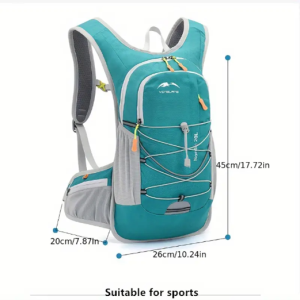
By Elke Effler – Maroondah Bushwalking Club

The great day is just around the corner, and you realise you don’t know what you should take, or the specific type of gear you need to help make your hike a success. Or, you have decided to go outside your comfort zone and attempt your first weekend hike, after which, having survived that, you may consider a hike of perhaps four or five days. What do you pack? What type of gear is essential, and what to leave behind because the weight of your backpack is a major consideration? Whatever you take, you will carry on your back.
Let’s look at the various grades of hikes available, as this will determine what you pack, and therefore carry. In this article, we will look at short half day, day, weekend, 2 – 3 days, and when you are more confident and ambitious, longer trips of four-plus days.
Please note that many of the links below give excellent information on how to pack your backpack to ensure it is balanced and comfortable on your back.
Packing for a half- day and full-day hike: How to Pack a Backpack for a Day Hike: Packing List and Tips (2023) (camotrek.com)
HIKING GEAR I Bring On A Day Hike + How I Pack My Day Hiking Backpack | 2021 (youtube.com)
How to Pack for a Day Hike (youtube.com)
See: Australian Hiker | How to pack a backpack; a beginners guide for excellent advice on how to pack your pack for those 3+ treks.
Half-Day Hike

And don’t forget to check the weather before you go just in case you need to pack wet weather clothing.
- Backpack: Choose a small backpack of around 20-30 litres to carry your gear comfortably, and one that has features like hydration compatibility, breathable back panels and multiple pockets. For half and day hikes, lightweight and durable materials like nylon or polyester are suitable. These materials provide adequate durability without adding unnecessary weight.
- Water: Bring at least 1 litre of water (2 if on a day hike) to stay hydrated during the trek. Use a water bottle or hydration bladder.
- Snacks: Pack lightweight snacks like trail mix, energy bars or fresh fruit to keep your energy levels. If on a day hike, pack a lunch.
- Navigation: Your leader will have recce’d the trail and will know the route. But it’s always a good idea to have some navigation skills as well.
- Sun Protection: Bring sunscreen, sunglasses, and a hat to protect yourself from the sun.
- Weather Appropriate Clothing: Wear comfortable clothing suitable for the weather, including layers for changing conditions.
- Footwear: Choose sturdy, comfortable shoes or hiking boots appropriate for the terrain.
- First Aid Kit: Include basic first aid supplies like bandages, antiseptic wipes, and pain relievers, and any specific medication you need.
- Emergency Essentials: Bring a whistle, flashlight, and a small emergency blanket, just in case. Include in your pack a Ziplock bag a document containing your personal details, including any medical conditions, medication, and a contact person in case of accident.
- Mobile Phone: Make sure your phone is fully charged and tell someone where you are going and when you expect to be home again.
- Optional Extras: Depending on your preferences and the specific trail, you may also consider packing a camera and binoculars.

Weekend Hiking (2-3 days)
What should I pack on a 3 day backpacking trip? – SectionHiker.com
What Should I Pack For A 3 Day Backpacking Trip? – The Hiking Authority (this site has a lot of ads.)

- Medium-sized backpack: Upgrade to a larger backpack of 30-70 litres with an internal frame. Choose a pack with adjustable suspension, compression straps, and a separate sleeping bag compartment for added convenience. Look for features like a padded hip belt, adjustable torso length, and multiple compartments for organisation. Consider models with ventilation systems to keep you cool during long hikes.
- Material: Look for slightly more robust materials like ripstop nylon or a blend of nylon and polyester. These materials offer good resistance to abrasion and are still lightweight.
- Tent or Shelter: Bring a lightweight tent or shelter for overnight camping.
- Sleeping Bag and Sleeping Pad: Choose a sleeping bag and pad suitable for the expected temperatures. Remember that feeling the cold is a very personal experience. Women tend to feel the cold more quickly than men, who seem to be human heat banks. Me, I have the warmest down sleeping bag for women I could afford. My husband would roast in it.
- Cooking Gear: Pack a lightweight stove, fuel, cookware, and utensils for preparing meals.
- Food: Bring lightweight, easy-to-cook meals and snacks for each day of your trip.
- Water Filtration: Carry a water filtration or purification system for refilling water bottles from natural sources.
- Extra Clothing: Pack extra layers, socks, and underwear for changing weather.
- Toiletries: Bring biodegradable soap, toothpaste, and a small towel for personal hygiene.
- Repair Kit: Include duct tape, a multi-tool, and extra tent stakes for making quick repairs.
- Camp Shoes: Bring lightweight camp shoes or sandals for relaxing at the campsite.
- Footwear: Choose sturdy, comfortable shoes or hiking boots appropriate for the terrain.
- Emergency Essentials: Bring a whistle, flashlight, and a small emergency blanket, just in case. Include in your pack a Ziplock bag a document containing your personal details, including any medical conditions, medication, and a contact person in case of accident.
- Mobile Phone: Make sure your phone is fully charged and that you have a device a charging device.
Expeditions (1 week or more)
Extended Expedition Pack
Watch me see – How and what to Pack for Long-Distance Hiking and Trekking
Barefoot Theory – How to Pack a Backpacking Pack for a Multi-Day Hiking Trip
For extended expeditions, choose a large expedition pack with a capacity of 60 -70 litres or more. Look for heavy-duty construction, reinforced seams, and ample padding for comfort under heavy loads. Features like detachable daypacks, external gear attachment points, and adjustable suspension systems.

-
- Internal Frame Backpack: opt for a larger, 50+ litres capacity pack with an internal frame. Look for features like a padded hip belt, adjustable torso length, and multiple compartments for organisation. Consider models with ventilation systems to keep you cool during long hikes.
- Fitting: Get your pack professionally fitted to suit your body. The length of your back determines the adjustment needed to suit your back. Some brands offer packs suitable for men and as well as those suitable for women. How to Properly Fit Your Backpack for Hiking and Backpacking – YouTube
- Weight distribution: Make sure that weight distribution is optimal. How to Pack Your Backpack the Right Way | Outside – YouTube
- Material: For longer treks, durability becomes more crucial. Consider backpacks made of heavier-duty materials like Cordura nylon or a combination of nylon and Dyneema. These materials provide excellent abrasion resistance and can withstand the rigours of extended use.
- All the other points in the other sections above apply.
Some backpacking links
Packing your backpack on YouTube:
Hiking Tips – Set To Hike – How to Pack a Backpack
REI – How to Pack a Backpack
Outdoorguru – How to pack a backpack or How i pack my backpack | Expert advice
The Hiking Rev – Packing Your Backpack
Trekitt – How to Pack Your Rucksack Correctly
Typical mistakes people making packing their bag
5 STUPID but Common Beginner Backpacking Mistakes (learn from them) (youtube.com)
This one is not so much about packing but about the mistakes backpackers make regarding gear, what to take, what to leave behind, and how to use poles to help with the carrying of your pack.
6 mistakes EVERY new backpacker makes packing up (youtube.com)
General links on gear
This is a useful video on what all the straps on your backpack mean –
Backpack Straps Explained – Hiking Tips (youtube.com)
The best way to pack your tent – The BEST Way To Pack Your Tent For Backpacking! (youtube.com)
This video is specifically about sleeping systems – 7 mistakes EVERY new camper makes with their SLEEP SYSTEM (youtube.com)
Summary
The seasoned trekkers amongst us will have long ago learned what to take and what to leave at home, having discovered that a backpack can become wearingly heavy.
Newcomers might find longer walks appealing, but the idea of packing and carrying everything they need might put them off. So, mastering the art of packing a backpack is essential for a successful and enjoyable hiking experience.
By carefully selecting and organising your gear, considering factors such as trip length, weather and personal preferences, you can optimise your load for comfort, convenience and safety on the trail.
Remember to pack light, prioritise the essentials and always leave room for flexibility. With proper preparation and a well-packed backpack, you’ll be ready to set out on your trek with confidence, knowing you have everything you need for a super hiking experience.
I hope the information I have found for you will take some of the mystery and problems out of what to pack and how to pack it. The ‘How to pack’ is contained in most of the above links.
Happy trekking with a well-packed backpack.
